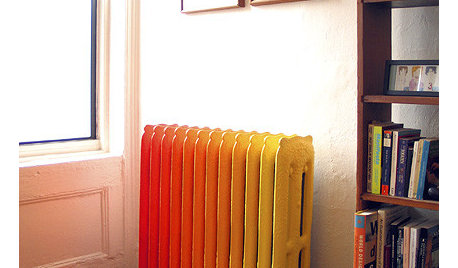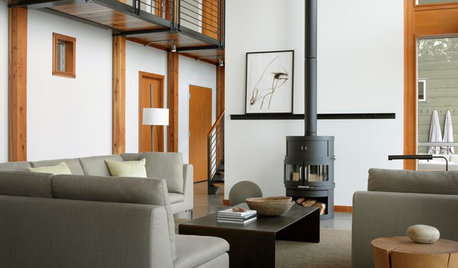Steam Radiators - regulating
grannabelle
16 years ago
Related Stories

DECORATING GUIDESHow to Make Peace With Your Radiator
Turn a bulky, unattractive old heater into an appealing part of a room
Full Story
DECORATING GUIDESRadiator Covers Like You’ve Never Seen
From custom to DIY, these 10 ideas will help the radiator blend in, become a storage standout or both
Full Story
HOUZZ TOURSMy Houzz: Goodwill and Good Taste in a Grand Colonial
Welcoming the community for charity fundraisers and more, this Massachusetts home radiates graciousness
Full Story
BEDROOMS8 Steps to a Greener, More Peaceful Bedroom
Clear away clutter, clean the air and make over your bedding for an oasis that radiates calm and well-being
Full Story
REMODELING GUIDESClean-Burning Woodstoves Ignite a Greener Heating Trend
No need to rely on oil or gas to heat your home — new woodstove designs burn cleanly and are beautiful to boot
Full Story
FIREPLACESUpdated Woodstoves Keep Home Fires Burning
Better technology means more efficiency than ever for modern woodstoves
Full Story
HOUZZ TOURSHouzz Tour: Clever Storage Ideas From a Manhattan Duplex
A bookcase on tracks, wall-spanning storage, a Murphy bed and more give a comedy writer flexibility for working and living at home
Full Story
SMALL HOMESHouzz Tour: A Studio Makes the Most of Every Inch
Thoughtful design transforms a neglected London flat into a stylish multitasking home
Full Story
KITCHEN APPLIANCESFind the Right Cooktop for Your Kitchen
For a kitchen setup with sizzle, deciding between gas and electric is only the first hurdle. This guide can help
Full Story
GREAT HOME PROJECTSUpgrade Your Windows for Beauty, Comfort and Big Energy Savings
Bid drafts or stuffiness farewell and say hello to lower utility bills with new, energy-efficient windows
Full StorySponsored
Columbus Area's Luxury Design Build Firm | 17x Best of Houzz Winner!
More Discussions


kframe19
grannabelleOriginal Author
Related Professionals
Little Ferry Solar Energy Systems · Muscatine Solar Energy Systems · South Whittier Home Automation & Home Media · Clearwater Home Automation & Home Media · Fayetteville Home Automation & Home Media · Goulds Home Automation & Home Media · Hanover Home Automation & Home Media · Odenton Home Automation & Home Media · Rowland Heights Home Automation & Home Media · Safety Harbor Home Automation & Home Media · San Mateo Home Automation & Home Media · East Setauket Home Automation & Home Media · Columbine Fireplaces · Crystal Lake Fireplaces · Evans Fireplaceskframe19
dchhat007
kframe19
kframe19
corvetteguy
kframe19
dchhat007
kframe19
kframe19
dchhat007
dchhat007
kframe19
dchhat007
kframe19
dchhat007
kframe19
dchhat007
kframe19
kframe19
dchhat007
dchhat007
dchhat007
kframe19
tmajor
kframe19
dchhat007
fourhappycampers
fourhappycampers
kframe19
kframe19
dchhat007
kframe19
fourhappycampers
kframe19